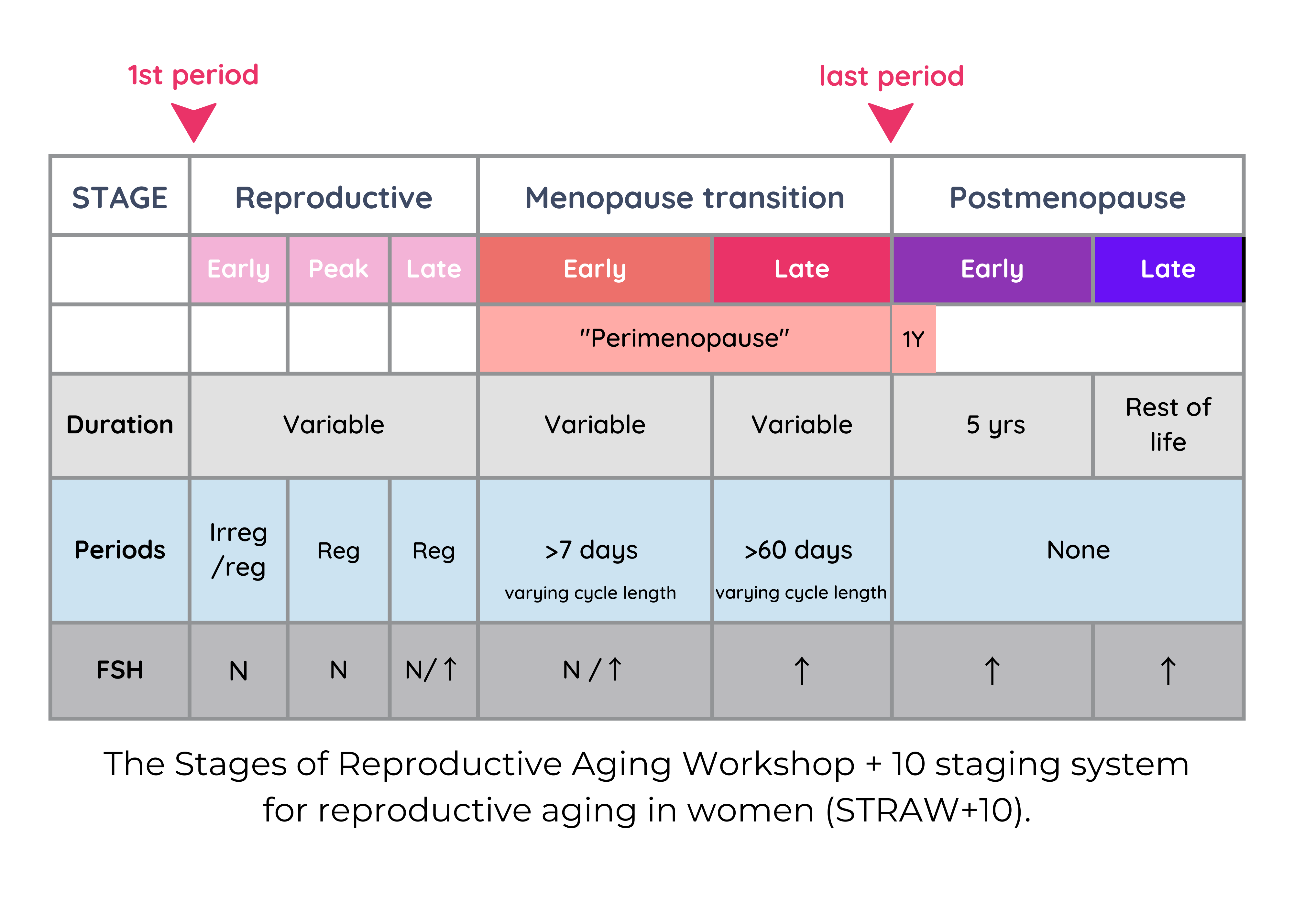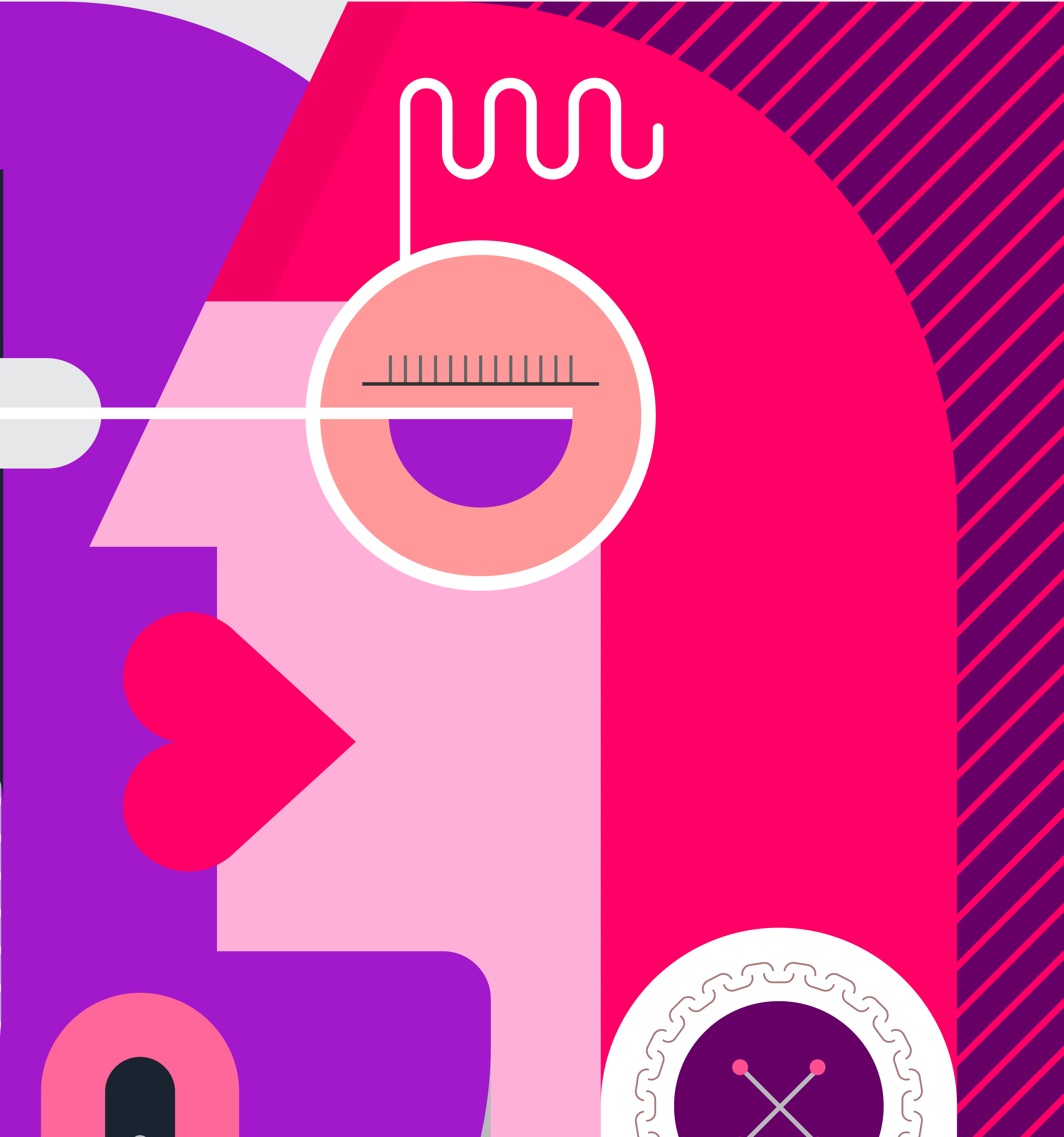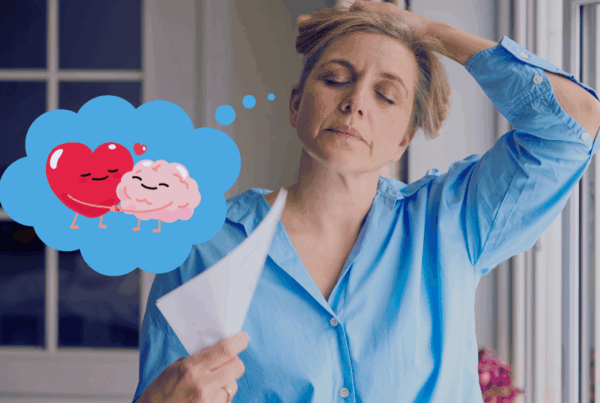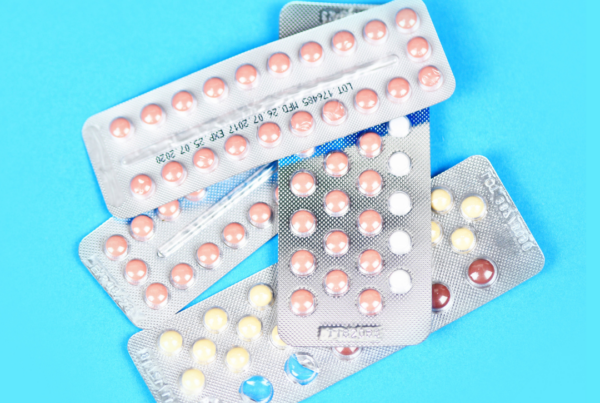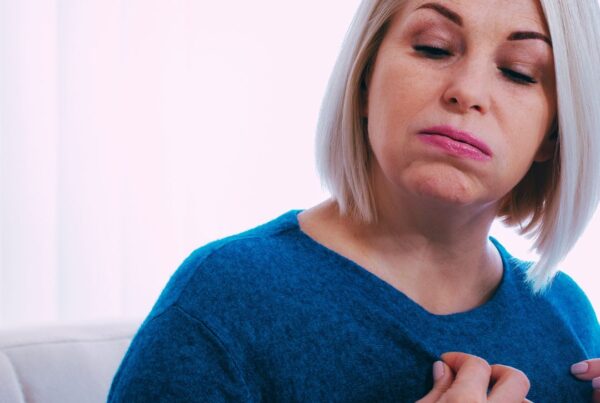reproductive stages
What’s happening now?
The female reproductive system journeys through various stages.
The STRAW classification is used to define these stages which start at puberty and arrive at late postmenopause.
The fertile years lie within the reproductive stages but not everyone has the typical hormonal cycles that allow pregnancy. Many women have a few or indeed many cycles where no ovulation occurs. This results in altered hormonal support of the second half of the menstrual cycle (the luteal phase) and periods that are irregular and light or heavy in flow.
It is hard to tell when the reproductive stages start and end. Menopause occurs 12 months after the last period and early and late postmenopause are defined by years, so these stages can be clearly defined. Even blood tests are not always helpful as your natural hormone levels change from hour to hour, day to day. It is for this reason it is often recommended any hormone levels be tested in the morning of the 5th day of your menstrual cycle (if you are exploring infertility, then there may be blood tests at various days of the cycle to try and identify ovulation).
Hormone changes, cycling and fluctuations are associated with symptoms that cross mood, sleep, appetite, energy levels, digestion, breast comfort and size etc across the lifespan of a women from puberty to early postmenopause. They finally settle in the early to late postmenopause stage although some women experience some symptoms like flushes, for life.
